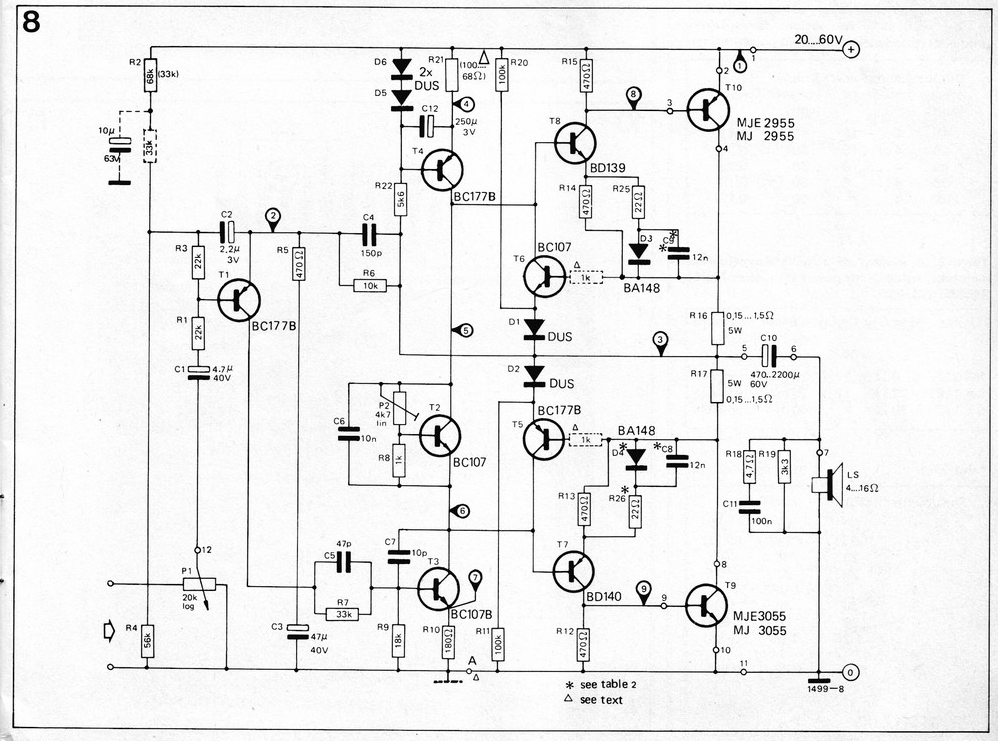Hi,
I've got some issues with an EQUA amplifier I had built four decades ago. The circuitry:

The symptoms: No amplification, i.e. no signal at the output terminals. The amp draws .7 amps out of the 65 volts power supply, with increasing tendency, even if bias potentiometer P2 is set to minimum. Voltage at the output terminal #5 reads about 11 volts, also does the first transistor's emitter voltage. Base voltage of T1 reads about 12,5 volts, which means reverse polarization of the base emitter diode. The transistor itself tests ok with hFE of about 150, but why does it behave this way? Why doesn't the emitter voltage follow the base voltage, adjusted by resistors R2 and R4?
Best regards!
I've got some issues with an EQUA amplifier I had built four decades ago. The circuitry:

The symptoms: No amplification, i.e. no signal at the output terminals. The amp draws .7 amps out of the 65 volts power supply, with increasing tendency, even if bias potentiometer P2 is set to minimum. Voltage at the output terminal #5 reads about 11 volts, also does the first transistor's emitter voltage. Base voltage of T1 reads about 12,5 volts, which means reverse polarization of the base emitter diode. The transistor itself tests ok with hFE of about 150, but why does it behave this way? Why doesn't the emitter voltage follow the base voltage, adjusted by resistors R2 and R4?
Best regards!
Last edited: